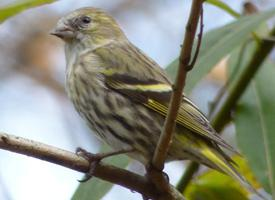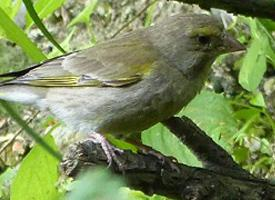
Greutăți și măsuri
| Lungime | de la 11 la 12,5 cm |
|---|---|
| Greutate | de la 10 la 18 g |
| Lungimea anvergurii aripilor | de la 20 la 23 cm |
Descrierea animalului
The Eurasian siskin (Spinus spinus), a small yet vibrantly colored member of the finch family, is a captivating sight for bird enthusiasts across its widespread habitat. Originating from the vast expanses of Europe and Asia, this bird has a distinctive appearance and behavior that sets it apart from other finch species.Characterized by its slender body, the Eurasian siskin measures between 11 to 12.5 centimeters in length, with a wingspan that ranges from 20 to 23 centimeters. Males and females exhibit sexual dimorphism, making them distinguishable by their coloration. Males boast a striking appearance with their bright yellow-green plumage, black cap, and bib, along with a black streaked back and yellow rump. The wings and tail are black with yellow edges, adding to their vibrant look. Females, on the other hand, are more subdued in color. They display a greyish-green back and are more streaked overall, with less pronounced yellow markings compared to the males. Both sexes, however, share similar physical features such as a short, conical bill adapted for their seed-based diet, and a notched tail.
Eurasian siskins are highly adaptable birds, residing in a variety of woodland habitats. They show a preference for coniferous forests but are also found in mixed and deciduous woods, parks, and gardens. Their range extends from the western parts of Europe, across the Palearctic to eastern Siberia, and southwards to China. They are partially migratory, with northern populations moving southwards during the winter to escape the colder temperatures.
The diet of the Eurasian siskin primarily consists of seeds, particularly those of conifers, alders, and birches. During the breeding season, they also consume small insects and arthropods, which provide essential proteins for the growth of their chicks. Their foraging behavior is agile and acrobatic, often seen hanging upside-down on thin branches to access seeds.
Breeding typically occurs from April to August. The Eurasian siskin is a monogamous bird, with pairs forming during the breeding season. The female is responsible for constructing the nest, which is a compact cup of twigs, moss, and grass, lined with feathers and hair, usually situated high in a tree. She lays 2 to 6 eggs per clutch, which she incubates for about 13 days. Both parents participate in feeding the chicks, which fledge approximately 14 to 16 days after hatching.
The song of the Eurasian siskin is a pleasant mix of twitters, trills, and buzzes, often delivered from a high perch. Their calls are a series of sharp "zit-zit" notes. These vocalizations play a crucial role in social interactions, particularly during the breeding season.
Despite facing threats from habitat loss and degradation in some areas of its range, the Eurasian siskin is currently listed as Least Concern by the International Union for Conservation of Nature (IUCN). This status is due to its large population size and extensive range. Conservation efforts continue to ensure that this species, along with its habitat, remains protected for future generations to admire.
In summary, the Eurasian siskin is a small, yet brightly colored and lively bird, known for its adaptability and widespread presence across Europe and Asia. Its distinctive appearance, interesting behaviors, and melodious song make it a fascinating subject of study and observation in the natural world.
Harta răspândirii

Animale similare
Fotografii noi cu animale
Top 10 animale
- Dolphin gull (Leucophaeus scoresbii)
- Diana monkey (Cercopithecus diana)
- Moustached guenon (Cercopithecus cephus)
- Galápagos tortoise (Geochelone nigra complex)
- Stone loach (Barbatula barbatula)
- Greek tortoise (Testudo graeca)
- Japanese macaque (Macaca fuscata)
- Russian tortoise (Testudo horsfieldii)
- Common flying dragon (Draco volans)
- Galápagos penguin (Spheniscus mendiculus)


